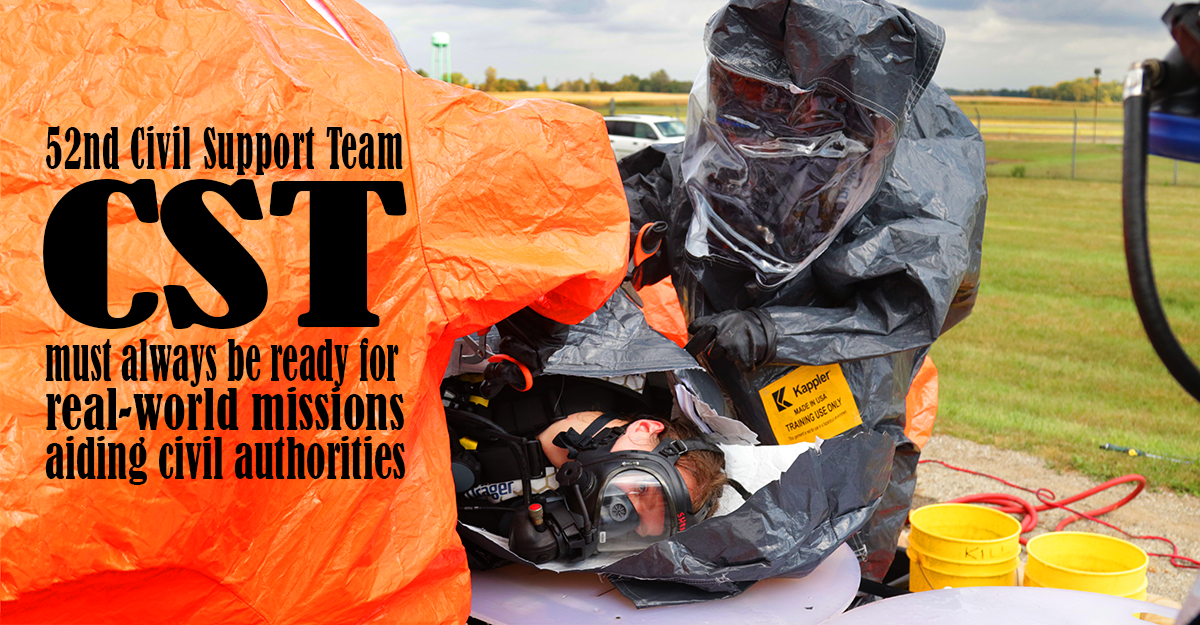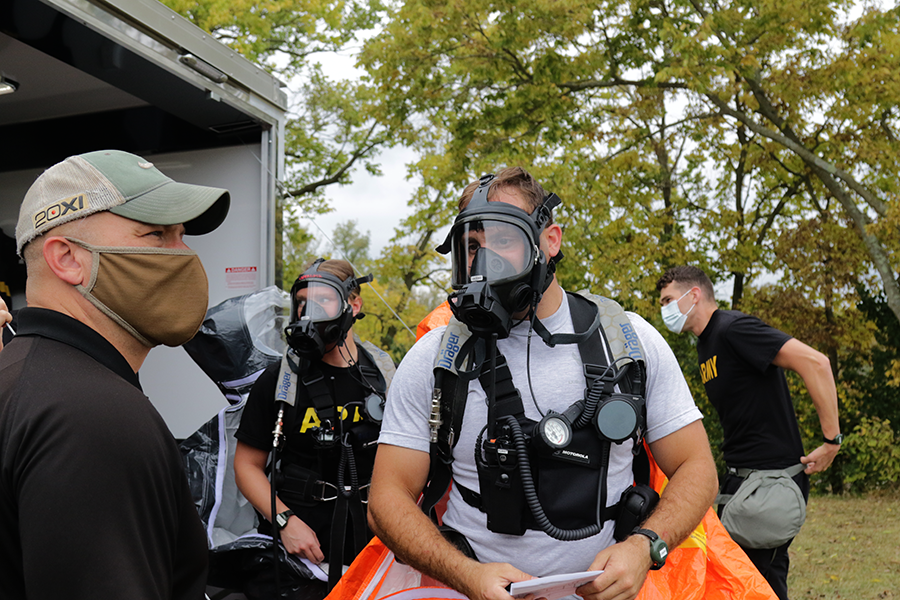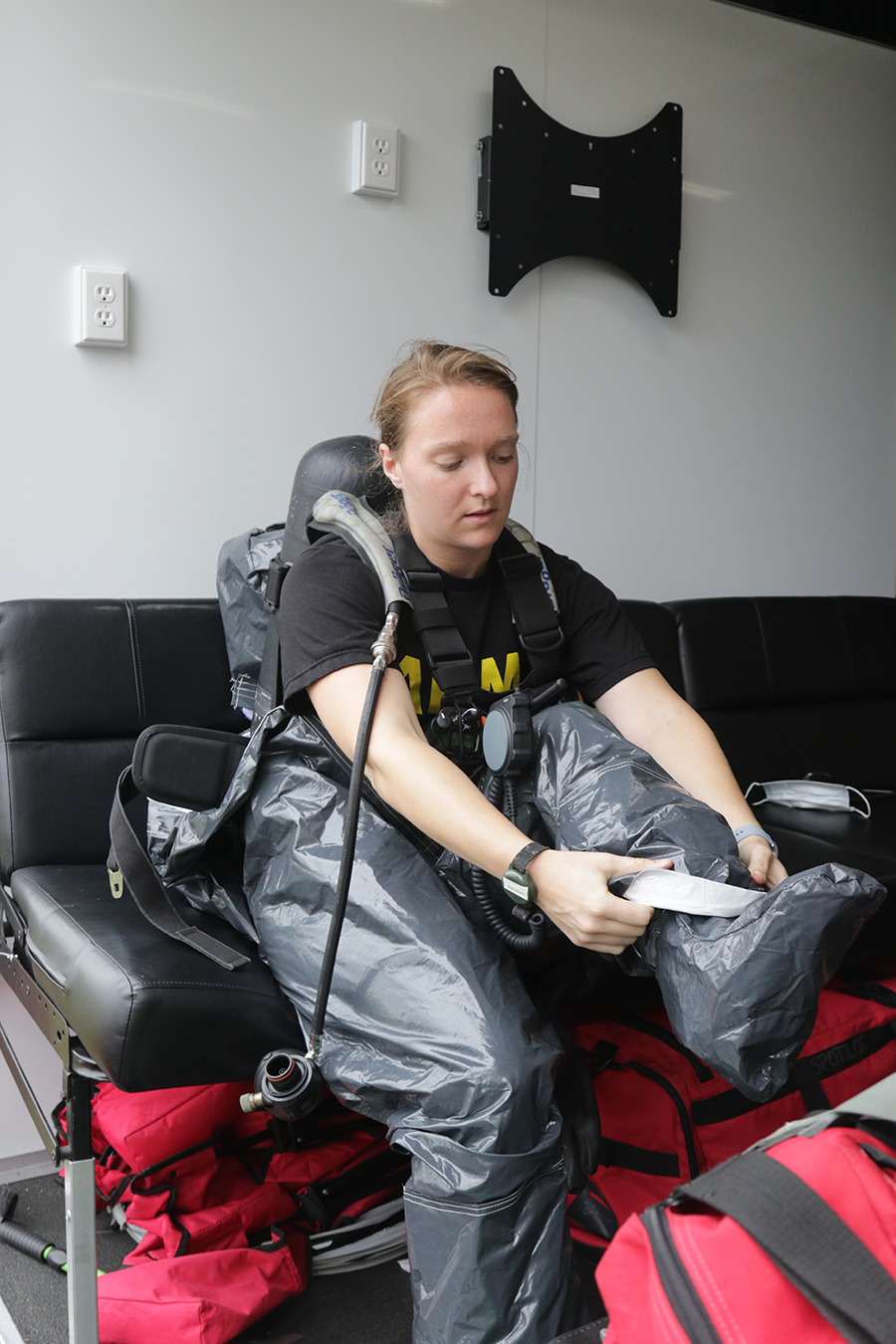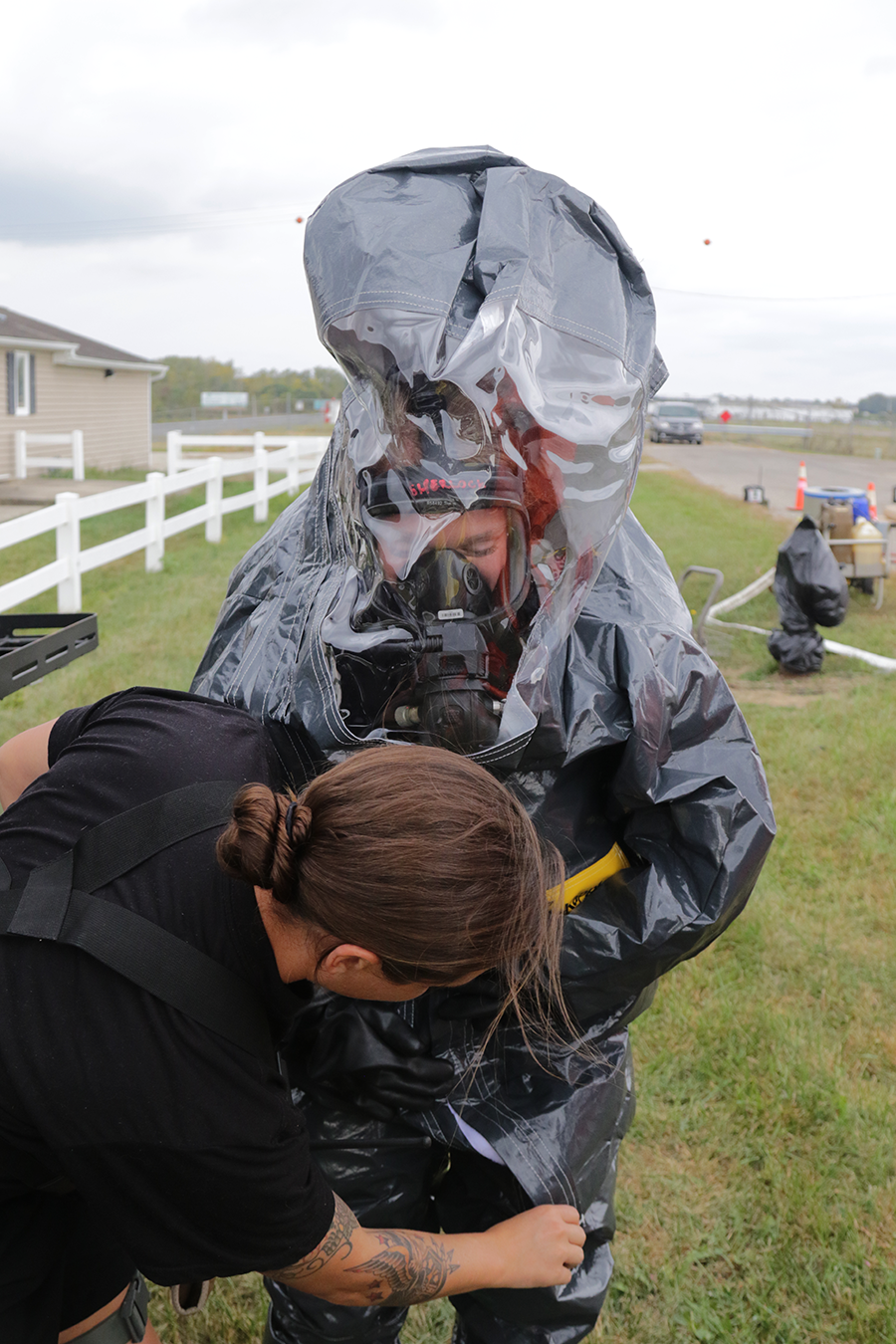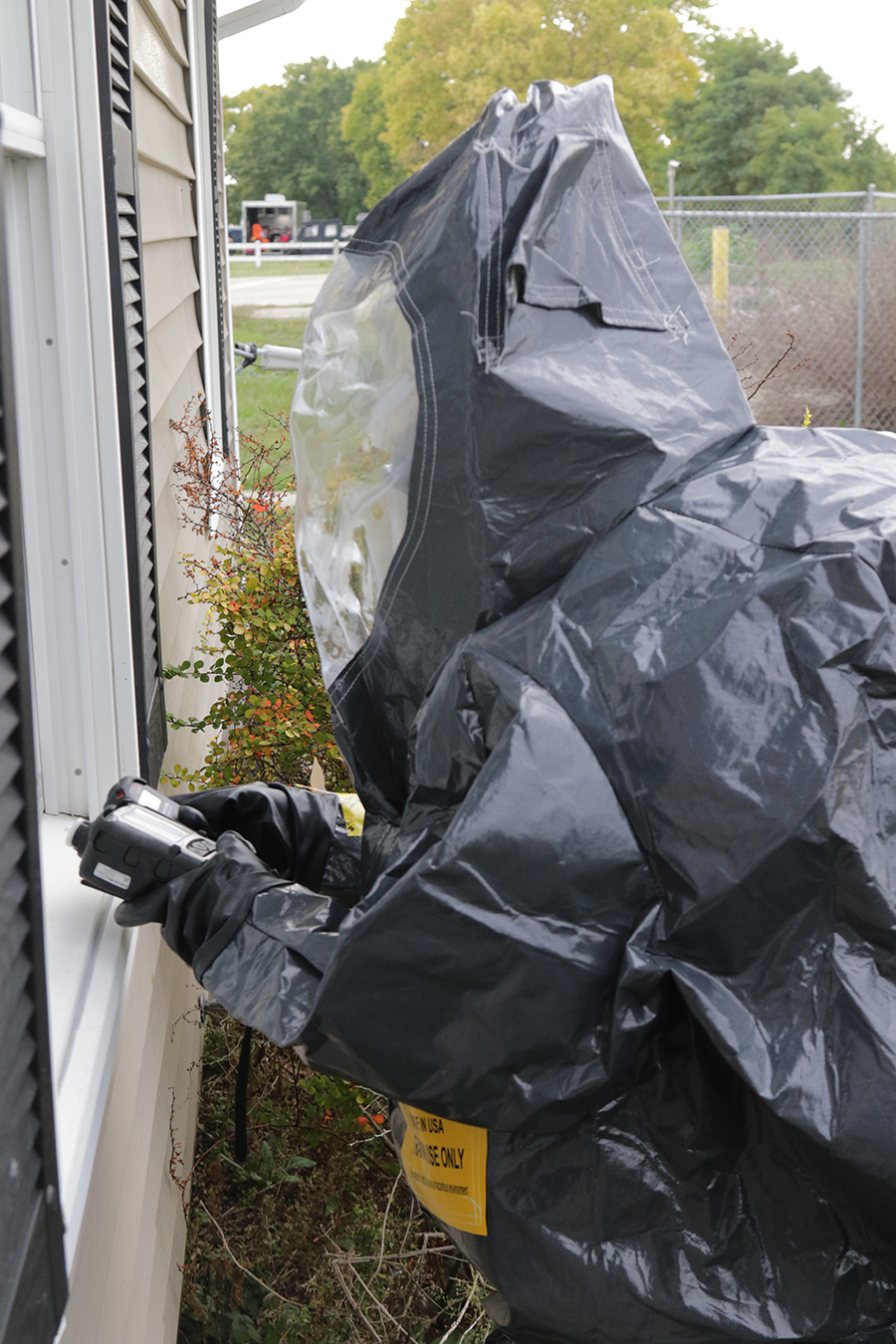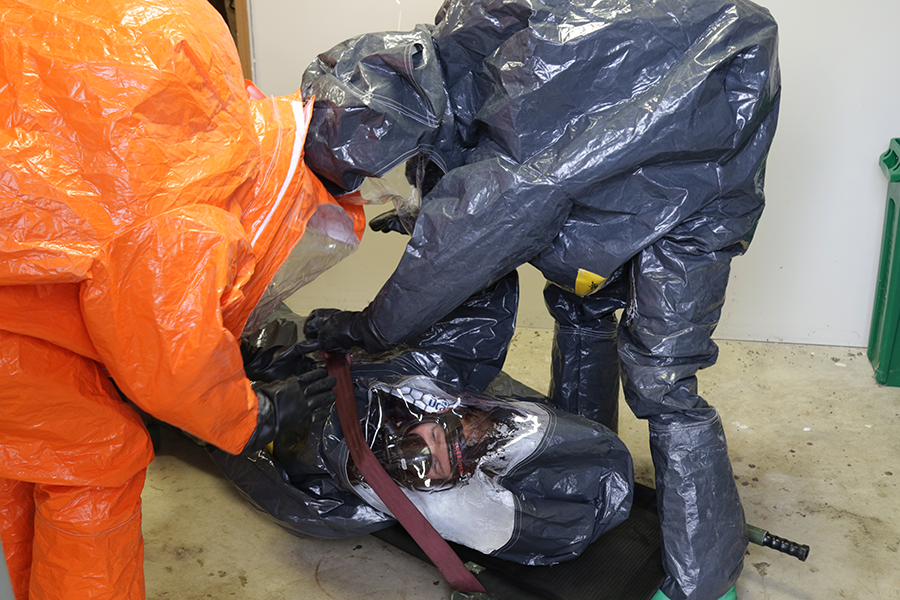52nd Civil Support Team must always be ready for real-world missions aiding civil authorities
Story by Photo by Staff Sgt. Michael Carden, Ohio National Guard Public Affairs
CARROLL, Ohio (09/28/20)
Two FBI agents in the hospital with strange symptoms, radioactive materials missing from a local research facility, and a shooting at a nearby building. It’s a recipe for disaster and a scenario that keeps first responders and counterterrorism experts awake at night. Enter the Soldiers and Airmen of the Ohio National Guard’s 52nd Civil Support Team (Weapons of Mass Destruction).
Within 90 minutes of receiving the call, they are headed to the site, to give federal, state and local responders insight on the hazard and how to handle it. This time, on a beautiful fall day at the end of September, they are showing up to a training exercise to practice their real-world skills while being externally evaluated by the experts from U.S. Army North.
“This unit represents the tip of the spear of our nation’s response to terrorist use of chemical, biological, radiological, nuclear and explosive agents,” said Derrick Johnson, a team chief with Civil Support Training Activity, U.S. Army North, and one of the evaluators for the exercise. “We’re here to assess the training program and to see if it’s successful.”
The members of the 52nd CST had to be creative with their training plan in the midst of a global pandemic, finding ways to keep their skills sharp while following social distancing guidelines and COVID-19 safety measures while on scene.
“Initially COVID took us to a screeching halt; this exercise was originally scheduled for the end of April,” said Lt. Col. David Foster, the commander of the 52nd CST. “That didn’t keep us from training. We just honed our individual tasks. From there we were able to jump into our collective training. We have trained hard, and these exercises will take us from good to great.”
While the exercise may not be dangerous, the team approaches it as if it were. From the moment they show up, they are planning the next step to locate and identify the threat.
One of those stepping into the unknown first is Tech Sgt. David Hurst, a survey team chief with the 52nd CST, who finds preparedness the best defense against nerves.
“That’s when I’m the most calm,” Hurst said. “Because our team does so much training. We do 300 to 400 hours of training per year. We’re going to the best schools that the Department of Defense offers, FBI and CIA. We’re the absolute best when we do go down range and it’s real.”
The civil support teams are a congressionally mandated program to provide identification, analysis and mitigation resources to first responders. Each of the CSTs across the country — there is at least one in every U.S. state and territory — is evaluated and validated every 18 months to ensure the team’s skills are up to the task of helping keep communities safe and protecting the homeland.
